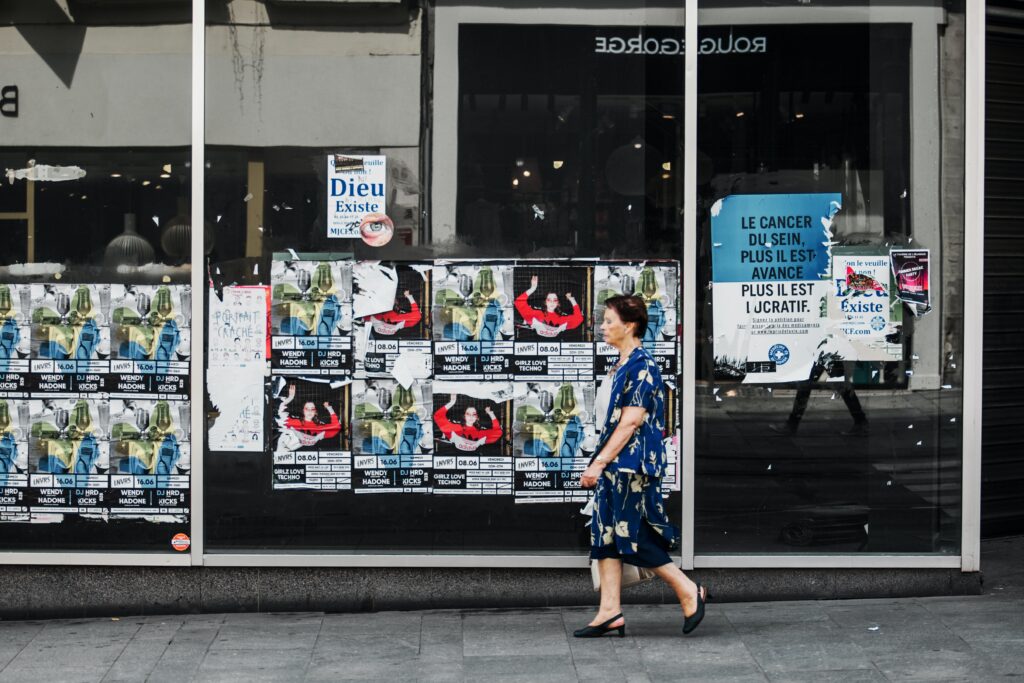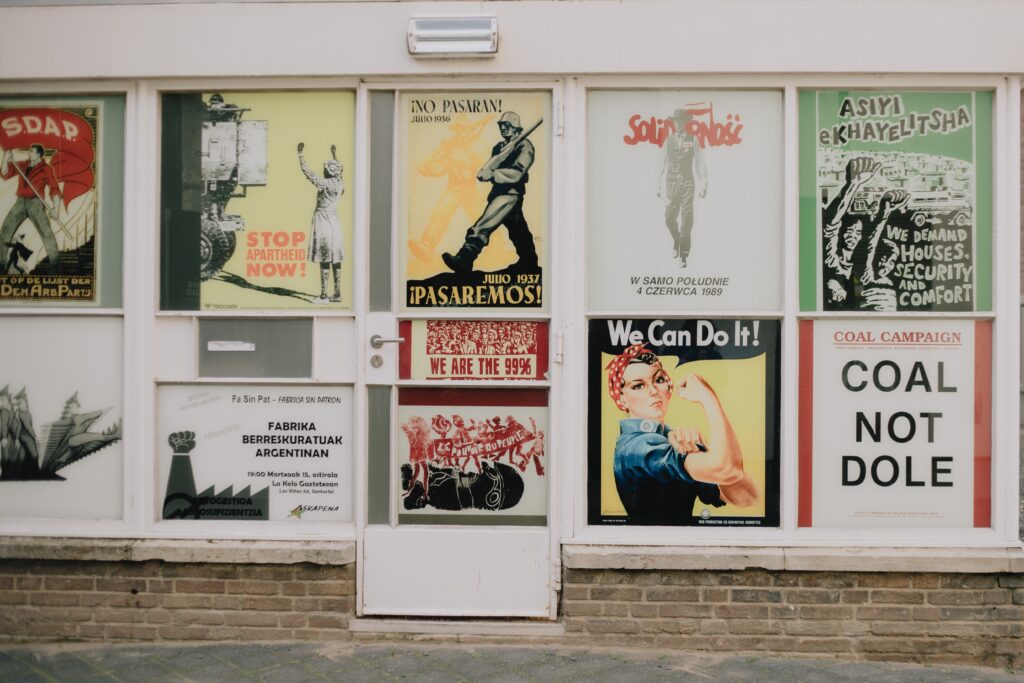The article titled “Told Ya So: The Prescient Posters of the Environmental Movement” explores the longstanding role of graphic artists in raising awareness about climate change and the environment. By showcasing the evolution of environmental posters over the years, the exhibition at Poster House in Manhattan highlights the various visual and rhetorical styles used by artists to effectively convey their messages. These posters aim to capture attention and change minds, utilizing striking images, thought-provoking slogans, and emotional appeals. From the counterculture roots of the 1970s to the present day, the article examines how the environmental movement has adapted its strategies to meet the challenges of our changing world.

Introduction
The preservation of the environment has been a pressing issue for decades, and graphic artists have played a crucial role in raising awareness about climate change. Through powerful posters, they have attempted to convey the urgency of the situation and inspire action. An exhibition at Poster House in Manhattan explores the evolution of these environmental posters and how they reflect the changing strategies of the movement. With 33 posters on display, along with postage stamps and other artworks, the exhibition offers a comprehensive look at the visual and rhetorical styles employed by graphic artists to call attention to environmental issues.
Environmentalism in the 1970s
Counterculture roots
During the 1970s, environmentalism began to find its voice, drawing its roots from the counterculture movement. This period was characterized by a growing concern for ecological issues and a desire for a sustainable future. People started to question the impact of industrialization and consumerism on the environment, leading to a cultural shift towards more environmentally-conscious attitudes.
Protests against the Vietnam War
In addition to counterculture influences, the environmental movement in the 1970s was also closely linked to the anti-Vietnam War protests. Many activists involved in the anti-war movement recognized the interconnection between war and environmental destruction, leading to a broader awareness of the need for environmental action.
Robert Rauschenberg’s poster for the first Earth Day
One significant milestone in the history of environmentalism was the first Earth Day, held in 1970. Renowned artist Robert Rauschenberg designed the official poster for this event, which depicted grim scenes of deteriorating ecologies surrounding a bald eagle. The poster aimed to tap into the public’s sense of patriotism, emphasizing the need to protect the environment for the sake of the nation’s well-being.
Hans Erni’s call for clean water poster
Another influential poster from the 1970s was Hans Erni’s call for clean water. Created in 1961, this poster featured a haunting image of a skull submerged in a drinking glass. By juxtaposing the stark reality of pollution with the symbol of a basic human need, Erni’s poster served as a stark reminder of the choice between peace and poison.

Marketing the Environmental Movement
The need for awareness and persuasion
Promoting the environmental movement required a two-pronged approach: raising awareness and persuading the public to take action. Graphic artists recognized that they needed to create visuals and messages that would capture people’s attention and convey the urgency of the environmental crisis.
Milton Glaser’s ‘Give Earth a Chance’ poster
A notable example of this marketing effort was Milton Glaser’s iconic ‘Give Earth a Chance’ poster from 1970. Featuring a drawing of the Earth floating in a living room, the poster aimed to humanize the environmental cause and emphasize the interconnectedness of all living beings. The use of a recognizable phrase, reminiscent of the popular ‘Give Peace a Chance’ slogan, helped create a sense of solidarity and urgency.
Tones shifting in the posters
As the environmental movement progressed, the tone of the posters shifted to reflect the growing severity of the crisis. What started as bright and witty designs gradually became more somber and poignant, highlighting the urgency of the situation. Artists began to incorporate haunting visuals and thought-provoking messages to elicit an emotional response from viewers.
Yen-chang Cheng & Hung-yu Chen’s austere illustration
A notable example of this shift in tone is Yen-chang Cheng & Hung-yu Chen’s austere illustration from 2008. Depicting a baby polar bear floating on its mother’s corpse, this poster starkly portrays the devastating consequences of climate change. The use of such a powerful image aimed to evoke empathy and compel viewers to take action.
Optimism in the 1980s
Flashes of optimism in the posters
While the 1980s brought an increased understanding of the gravity of environmental issues, there were also flashes of optimism in the posters of the time. Graphic artists recognized the need to inspire hope and rally people around the cause, particularly by highlighting the importance of protecting future generations and the natural world.
Calls to rally around children and animals
Several posters from the 1980s focused on rallying support by highlighting the importance of protecting children and animals. These posters often featured uplifting images of children and animals living harmoniously in nature, emphasizing the need to preserve the environment for their sake.
Eric Carle’s pro-tree poster
One notable example from this period is Eric Carle’s pro-tree poster, created in 1982 for a United Nations climate meeting. Eric Carle, known for his beloved children’s book “The Very Hungry Caterpillar,” used his signature colorful and playful style to promote the importance of trees in maintaining a healthy and balanced ecosystem.

Questioning Motives
Counterforces at work
Even as the environmental movement gained traction, counterforces were at work to undermine its progress. The consumerist culture, driven by profit-driven corporations, employed subtle tactics to shift blame away from themselves and onto individuals.
The deceptive context of the ‘Crying Indian’ poster
One example of this deceptive marketing is the iconic “Crying Indian” poster. Featuring a Native American shedding a tear as he witnesses pollution, this poster aimed to place the blame on individuals for pollution instead of addressing the role of corporations. The reality that the “Crying Indian” was actually portrayed by an Italian American actor further highlights the deceptive nature of the campaign.
Shift in responsibility from brands to individuals with the ‘carbon footprint’
Another example is the concept of the “carbon footprint,” which was introduced by marketing strategists to shift responsibility from corporations to individuals. By framing the issue in terms of individual consumption choices, the focus was shifted away from the larger systemic issues caused by corporations and fossil fuel industries.
Culture Jamming Mode
Development by activists in the ’90s
In the 1990s, a new mode of environmental activism emerged known as “culture jamming.” Activists used subversive tactics to challenge and disrupt the dominant narratives perpetuated by corporations and advertisers. This approach aimed to expose the hypocrisy and misinformation disseminated by branding campaigns.
Examples of culture jamming posters
Culture jamming posters often employed irony, humor, and satire to critique mainstream messages and challenge societal norms. A prime example is a satirical poster by the British designer Barnbrook, which parodied a Volkswagen ad during the COP21 climate conference. The poster, displayed in Paris bus stops, juxtaposed Volkswagen’s apology for an emissions scandal with the text “We’re sorry that we got caught.”
A satirical poster by Barnbrook during the COP21 conference
This satirical poster highlights the power of culture jamming to subvert traditional forms of advertising and expose corporate dishonesty. Such posters aimed to disrupt the dominant narratives perpetuated by corporations and encourage critical thinking and collective action.
Creative Advertising
Morally ambiguous posters
While the environmental movement has often relied on powerful and effective posters, some examples demonstrate the morally ambiguous nature of advertising. Ad agencies, too, have employed creative tactics to appeal to environmental concerns while promoting products or services that may not align with sustainability goals.
Ogilvy & Mather’s luxury speedboat ad
One particularly controversial poster from 2017 depicted a well-heeled woman posing with a megaphone on a luxury speedboat, while a fishing vessel drags in a whale in the background. The caption reads, “For those with environmental awareness” followed by a price tag of $72,000. This ad, created by Ogilvy & Mather for a hybrid electric Lexus, blurs the lines between true environmentalism and corporate greenwashing.
Outspending corporate P.R.
Despite the challenges posed by corporate influence, many environmental activists have managed to outmaneuver corporate public relations efforts. By appealing to specific policies and leveraging creative design, graphic artists have been able to counteract the deceptive messaging employed by corporations.
Gavin Snider’s ‘The Green New Deal’ poster
One example of this counter-narrative is Gavin Snider’s 2019 poster promoting the Green New Deal. Snider’s design depicts a lively scene centered around the giant globe fountain from the 1964 World’s Fair, evoking a sense of nostalgia and optimism. By focusing on a specific policy proposal, the poster encourages viewers to support concrete actions to address the environmental crisis.
Nostalgic Style and Specific Policy
Jan Martijn Burger’s divestment poster
In recent years, graphic artists have turned to nostalgic styles and specific policy proposals to communicate their message effectively. Jan Martijn Burger’s 2023 poster urging divestment in fossil fuels adopts the style of W.P.A. printmakers, evoking a sense of history and resilience. By tapping into the power of nostalgia, the poster appeals to the emotions of viewers and encourages them to take action.
The fading joy in the environmental movement
Ultimately, the mood of the environmental movement has shifted over time, with a gradual fading of joy and optimism. As the gravity of the climate crisis becomes increasingly apparent, graphic artists have embraced more somber and urgent tones in their posters. This shift reflects the growing awareness of the monumental challenges ahead and the need for immediate action.
Exhibition at Poster House
Overview of the exhibition
The exhibition at Poster House provides a comprehensive overview of the evolution and impact of environmental posters. By showcasing a diverse range of posters spanning several decades, the exhibition offers a unique perspective on the visual and rhetorical strategies employed by graphic artists to convey the urgency of environmental issues.
Number of posters on view
The exhibition presents 33 posters, providing ample material for visitors to explore and analyze. Each poster tells a unique story and exemplifies different approaches to raising awareness about environmental concerns.
Other materials on display
In addition to the posters, the exhibition also includes postage stamps and artworks by Vivienne Westwood. These additional materials contribute to a more holistic understanding of the environmental movement’s influence on various forms of visual communication.
Conclusion
The power of graphic design in the environmental movement cannot be underestimated. From the counterculture roots of the 1970s to the culture jamming mode of the ’90s, graphic artists have played a crucial role in shaping public perception and inspiring action. While the challenges posed by deceptive marketing and corporate influence persist, the exhibition at Poster House demonstrates the resilience and creativity of graphic artists in their ongoing efforts to raise awareness about environmental issues. By analyzing and appreciating the evolution of environmental posters, we can learn valuable lessons about effective communication and the power of visual imagery in driving social change.

